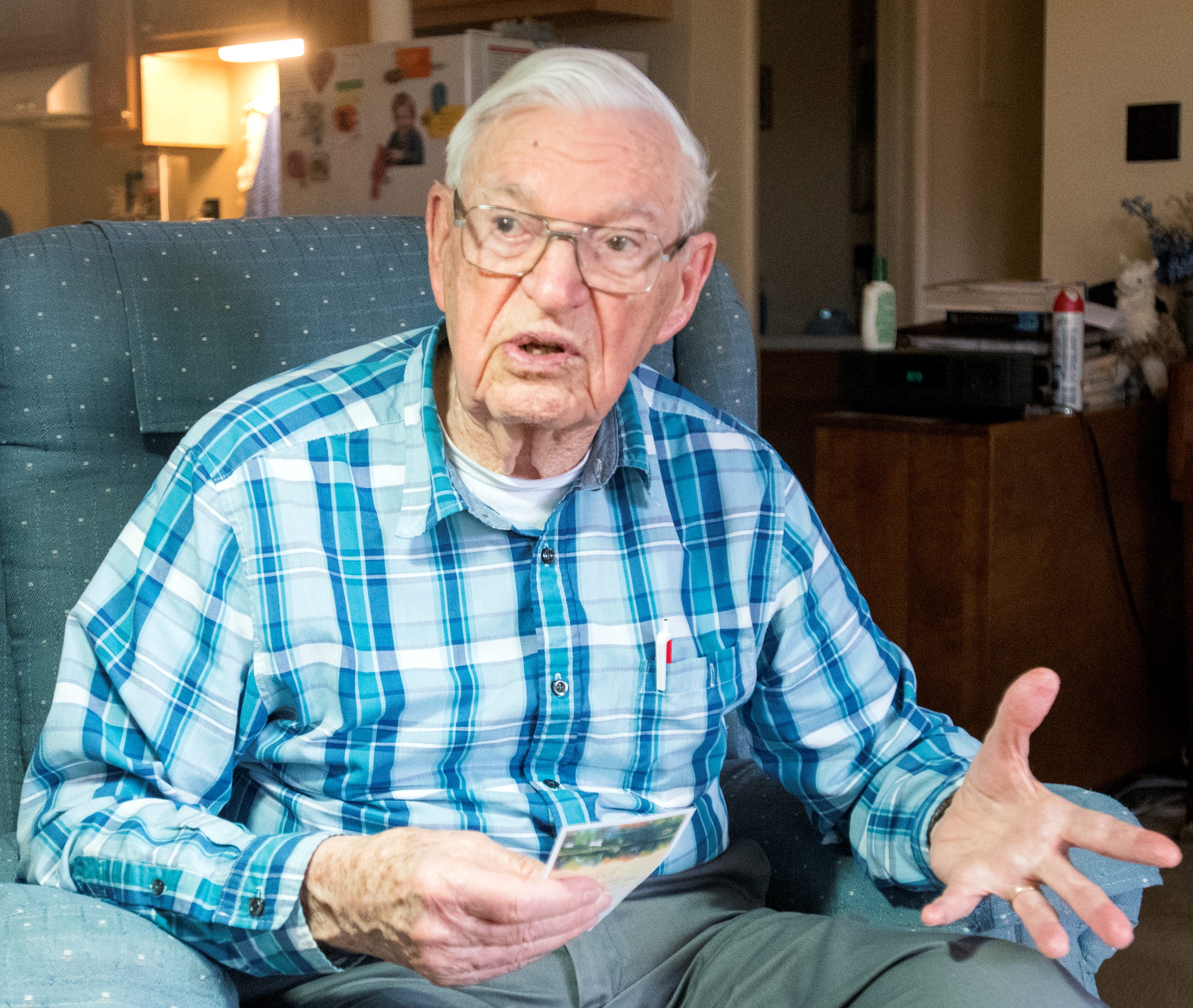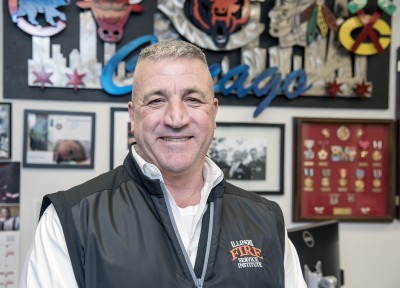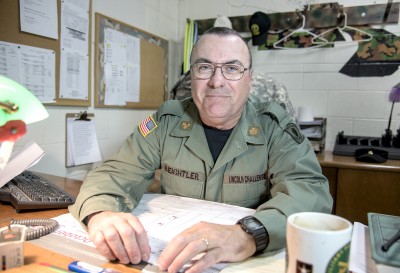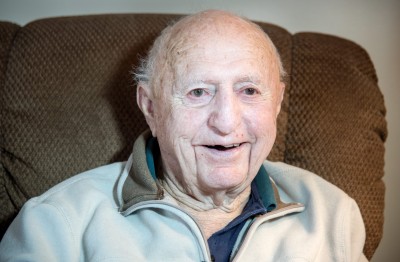Fred Finn
By Paul Wood

Photo By Robin Scholz/The News-Gazette
MONTICELLO — Fred Finn built roads and landing strips on the island of Okinawa, where Japanese snipers were plentiful.
In World War II at Okinawa, the Seabees — Navy engineers and construction workers — were tasked to repair or build infrastructure for Marine and Army personnel.
On April 1, 1945, the first invasion of Okinawa was the largest amphibious assault in the war in the Pacific Theater.
“We came in on the second wave; we didn’t come in with the Marines,” he said.
Marines and soldiers struggled to take the island.
“Nothing I did was very exciting,” according to Finn, though kamikaze planes went after LSTs, sinking one on his landing.
The battle took nearly three months. The Seabees’ job was to keep the operation operating, Finn said.
“My job was to assure there were tools and materials for building infrastructure for eventual airfields and camps at Yanbaru on Okinawa Island,” Finn said.
At one time or another, 55,000 Seabees were assigned to Okinawa.
Finn, 94, got the job because he was already training as an engineer at the University of Arizona when the war broke out.
He was in the Army ROTC, which was mandatory for freshmen and sophomores.
At the time, the Army was using horse-mounted cavalry, he recalled.
Finn was assigned to the Navy’s V-12 College Training Program as an apprentice seaman, with the possibility of finishing his engineering training with a bachelor of science degree.
Finn was honorably discharged from the Army so he could join the Navy as an apprentice seaman.
He was sent to the University of New Mexico, where there was a Navy ROTC program, then to Officer Candidate School in Rhode Island.
“It was an easy transition, as the Navy provided board and room and some pay,” Finn said.
He received his commission as an ensign in civil engineering in December 1944.
He was ordered to report to the 125th Naval Construction Battalion in April 1945.
The battalion was preparing for departure to the Pacific.
“When I joined the battalion, I was 22, working with all volunteers with years of construction experience,” he said.
He learned rapidly to depend on chief petty officers for guidance, he said.
“Seabees are not generally trained as combat units, but play an important role in support of Marine and Army units, which are trained for combat,” Finn said.
“Our battalion was required to participate in some combat training.”
The first Pacific task the battalion had was to build Marine landing strips for Corsair fighter planes in support of Marine ground units.
On Okinawa, “the fighting had moved to the southwest, but kamikazes were attacking ships in the harbor, and they sank one of four LSTs,” he said.
One person was killed and five received Purple Hearts.
The Seabees also built bases for short-range bombers.
Before the field was totally operational, the island was declared secured.
“We still had work to do on the airfield, and snipers were a problem at all times,” he said.
He said Okinawa was a staging location for the planned attack on mainland Japan, with personnel and equipment in abundance, including more Seabee battalions.
“We heard over the radio the U.S. had dropped new powerful bombs on two cities in Japan, and the war could be over soon, officially on September 2,” he said.
Personnel with sufficient points returned rapidly to the U.S.
He remained in the reserves and was called up during the Korean war for an assignment upgrading airfields for jet planes in the U.S.
The experience later led to his consulting for two international airfields in Saudi Arabia.
He spent five years in the active service and seven years in the reserves, ending his military career as a lieutenant commander.
He married Ruth and had two children.
Do you know a veteran who could share a story about military service? Contact Paul Wood at pwood@news-gazette.com.
Read more stories from local veterans:
 Royal P. Mortenson
CHAMPAIGN — Col. Royal P. Mortenson served around the world during a 30-year career as an infantry officer in the Marine …
Royal P. Mortenson
CHAMPAIGN — Col. Royal P. Mortenson served around the world during a 30-year career as an infantry officer in the Marine …
 Jeffrey Beightler
SAYBROOK — One of Jeffrey Beightler’s many duties in his many years of service involved the detaining of suspected Iraqi …
Jeffrey Beightler
SAYBROOK — One of Jeffrey Beightler’s many duties in his many years of service involved the detaining of suspected Iraqi …
 Bill Lowry
SAVOY — As a medic after the Battle of the Bulge, Staff Sgt. Bill Lowry assisted in dozens of surgeries. There were mass …
Bill Lowry
SAVOY — As a medic after the Battle of the Bulge, Staff Sgt. Bill Lowry assisted in dozens of surgeries. There were mass …